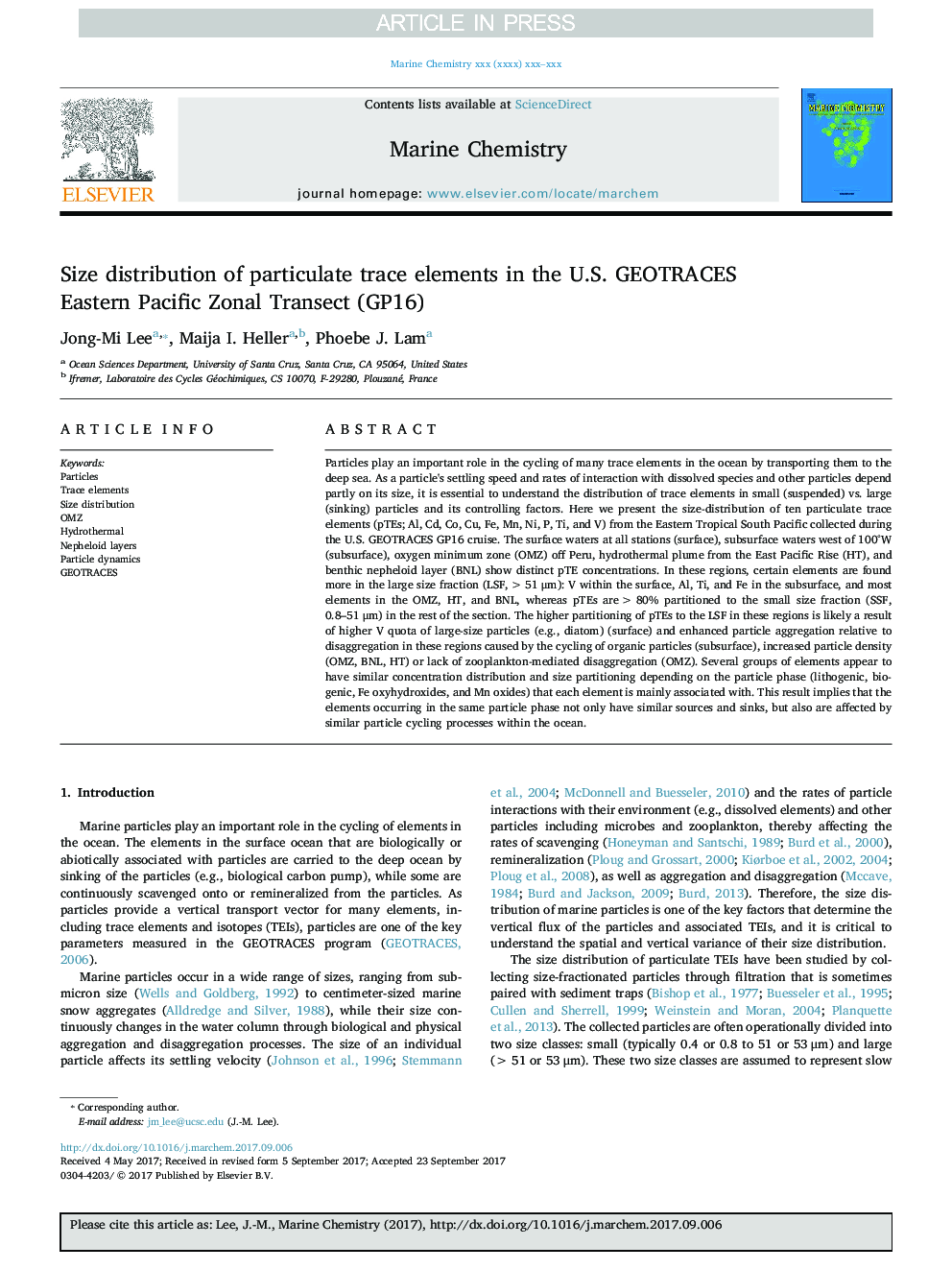| کد مقاله | کد نشریه | سال انتشار | مقاله انگلیسی | نسخه تمام متن |
|---|---|---|---|---|
| 7698844 | 1496635 | 2018 | 16 صفحه PDF | دانلود رایگان |
عنوان انگلیسی مقاله ISI
Size distribution of particulate trace elements in the U.S. GEOTRACES Eastern Pacific Zonal Transect (GP16)
دانلود مقاله + سفارش ترجمه
دانلود مقاله ISI انگلیسی
رایگان برای ایرانیان
کلمات کلیدی
موضوعات مرتبط
مهندسی و علوم پایه
شیمی
شیمی (عمومی)
پیش نمایش صفحه اول مقاله

چکیده انگلیسی
Particles play an important role in the cycling of many trace elements in the ocean by transporting them to the deep sea. As a particle's settling speed and rates of interaction with dissolved species and other particles depend partly on its size, it is essential to understand the distribution of trace elements in small (suspended) vs. large (sinking) particles and its controlling factors. Here we present the size-distribution of ten particulate trace elements (pTEs; Al, Cd, Co, Cu, Fe, Mn, Ni, P, Ti, and V) from the Eastern Tropical South Pacific collected during the U.S. GEOTRACES GP16 cruise. The surface waters at all stations (surface), subsurface waters west of 100°W (subsurface), oxygen minimum zone (OMZ) off Peru, hydrothermal plume from the East Pacific Rise (HT), and benthic nepheloid layer (BNL) show distinct pTE concentrations. In these regions, certain elements are found more in the large size fraction (LSF, > 51 μm): V within the surface, Al, Ti, and Fe in the subsurface, and most elements in the OMZ, HT, and BNL, whereas pTEs are > 80% partitioned to the small size fraction (SSF, 0.8-51 μm) in the rest of the section. The higher partitioning of pTEs to the LSF in these regions is likely a result of higher V quota of large-size particles (e.g., diatom) (surface) and enhanced particle aggregation relative to disaggregation in these regions caused by the cycling of organic particles (subsurface), increased particle density (OMZ, BNL, HT) or lack of zooplankton-mediated disaggregation (OMZ). Several groups of elements appear to have similar concentration distribution and size partitioning depending on the particle phase (lithogenic, biogenic, Fe oxyhydroxides, and Mn oxides) that each element is mainly associated with. This result implies that the elements occurring in the same particle phase not only have similar sources and sinks, but also are affected by similar particle cycling processes within the ocean.
ناشر
Database: Elsevier - ScienceDirect (ساینس دایرکت)
Journal: Marine Chemistry - Volume 201, 20 April 2018, Pages 108-123
Journal: Marine Chemistry - Volume 201, 20 April 2018, Pages 108-123
نویسندگان
Jong-Mi Lee, Maija I. Heller, Phoebe J. Lam,